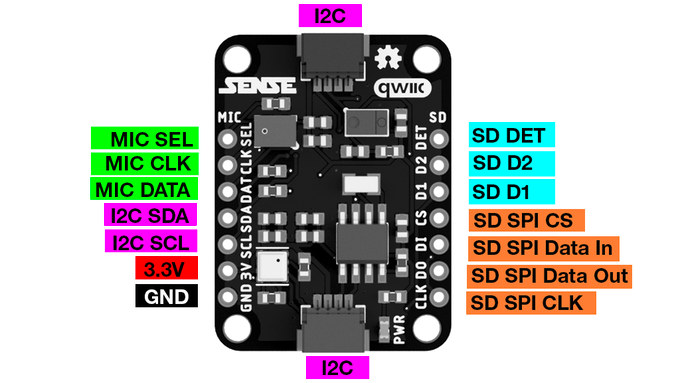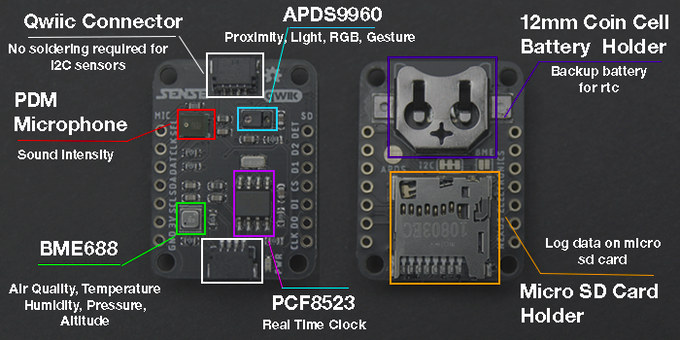SENSE is a compact multi-sensor board supporting measurement of air quality, sound, light intensity, temperature, proximity, etc… and designed by Zack Seifert, a seventeen-year-old electronics enthusiast and president of his school’s robotics team.
SENSE can work with any microcontroller or processor with I2C (hardware or implemented with bit-banging), including Arduino and Raspberry Pi boards. and an extra Qwiic connector allows for additional sensors.
SENSE board specifications:
- Storage – MicroSD card holder
- Sensors
Arduino Nicla Sense ME board - APDS9960 proximity, light, RGB, and gesture sensor sensor
- SPK0641HT4H PDM microphone
- Host interface – 1x Qwiic I2C connector to connect to the host system
- Expansion
- 1x Qwiic I2C connector for an additional sensor
- 2x 7-pin header with microphone, I2C, SPI, 3.3V, GND signals
- Misc – PCF8523 RTC + coin-cell battery holder
- Power Supply – 5V via Qwicc connector
- Dimensions – TBD

Zack, acting as Nexus Electronics, also provides software and documentation to get started with Arduino, CircuitPython, and Raspberry Pi. The latter also relies on CircuitPython through the adafruit-blinka library. We’re also told the schematics and board design files will be released upon successful funding.
There are plenty of projects possible with the board: an IoT weather station, a plant monitoring system, a clap switch, a desktop air quality monitor, a touchless faucet, and many more. Some of those are demonstrated in the video below.
The SENSE multi-sensor board has just been launched on Kickstarter with a lowly $1,000 funding target that has already been surpassed. Rewards start at $29 for the board (early bird), and once all first 100 pieces are gone, the price will go up to $35. You can also add $3 to have headers soldered to the board. Shipping adds $9 to the US, and $17 to select countries in Europe, as well as Canada, Japan, Australia, and Singapore. It’s not available to the rest of the world. Backers should expect their perks to ship in September 2022 if everything goes according to plans.

Jean-Luc started CNX Software in 2010 as a part-time endeavor, before quitting his job as a software engineering manager, and starting to write daily news, and reviews full time later in 2011.
Support CNX Software! Donate via cryptocurrencies, become a Patron on Patreon, or purchase goods on Amazon or Aliexpress




